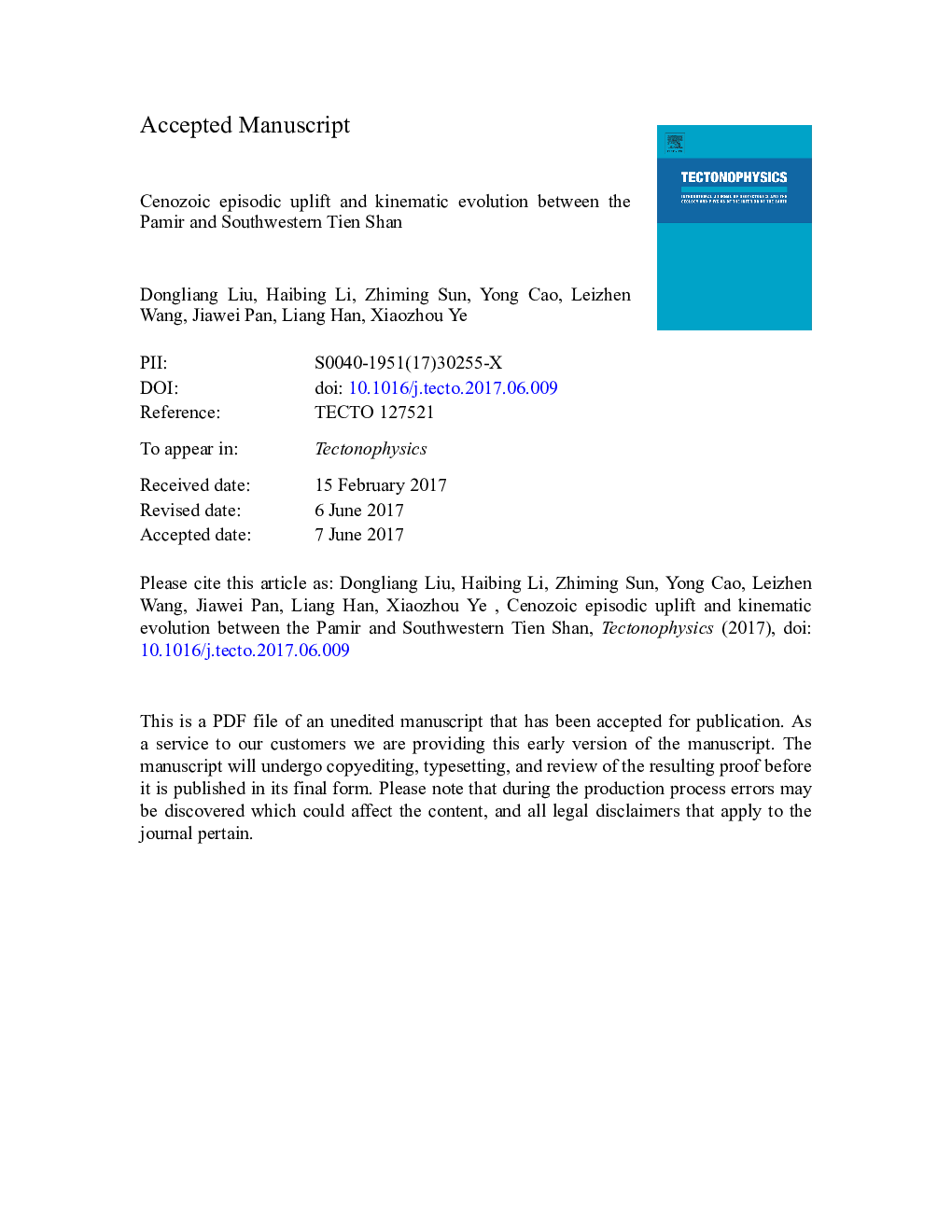| Article ID | Journal | Published Year | Pages | File Type |
|---|---|---|---|---|
| 5781551 | Tectonophysics | 2017 | 59 Pages |
Abstract
The Pamir Salient and Southwestern Tien Shan belong to two different systems, which collided due to the continuous northward drift of the Indian Plate during the Cenozoic, resulting in a shortening of ~Â 300Â km. The uplift history and kinematic evolution of the Pamir-Southwestern Tien Shan remain unclear. In this study, we chose the 2025 m-thick Pakabulake formation in the East Wuqia section, at the southern-most margin of the Southwestern Tien Shan system, to obtain a high-resolution magnetostratigraphic record spanning ~Â 16.61Â Ma to ~Â 9.78Â Ma. Based on its high sedimentation rate, stable ca. E-W paleocurrents and stable magnetic susceptibility values, the nearby Southwestern Tien Shan was inferred to have undergone stable uplift during this period of sedimentation. Combining our results with the previous low-temperature thermochronology, magnetostratigraphy and re-calculated block rotations, we conclude that four episodic uplift events occurred in the Pamir-Southwestern Tien Shan during the Cenozoic, at times of ~Â 50-40Â Ma, ~Â 35-16Â Ma, ~Â 11-7Â Ma and <Â 5Â Ma, and that the first episodic uplift only occurred in the Pamir Salient. In addition, the Pamir Salient underwent a tectonic transformation from entire- to a half-oroclinal bending rotation during the Miocene, caused by activity along the Karakorum Fault and Kashgar-Yecheng Transfer System.
Related Topics
Physical Sciences and Engineering
Earth and Planetary Sciences
Earth-Surface Processes
Authors
Dongliang Liu, Haibing Li, Zhiming Sun, Yong Cao, Leizhen Wang, Jiawei Pan, Liang Han, Xiaozhou Ye,
